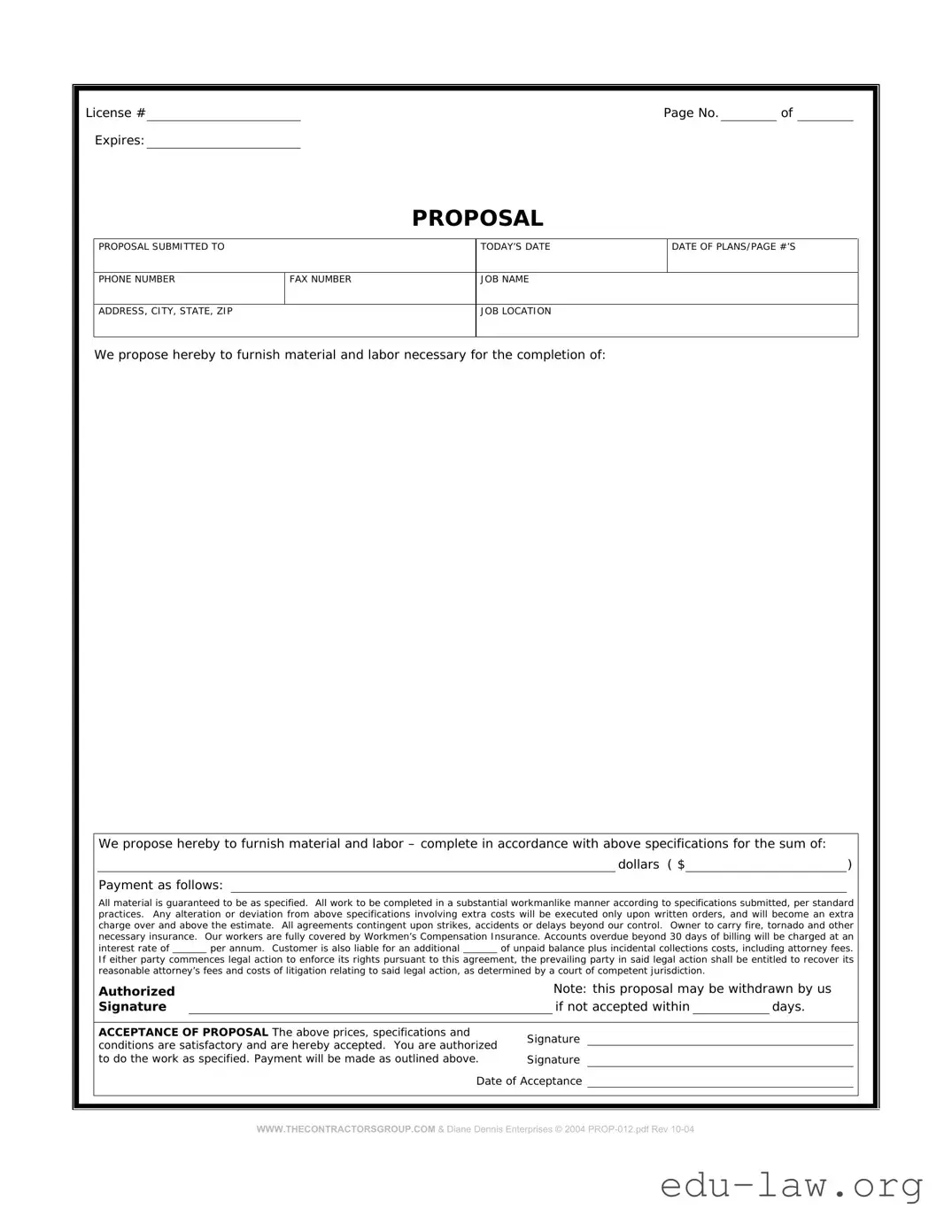What is a Construction Proposal Form?
A Construction Proposal Form is a document used to outline the details of a construction project. It typically includes information about the scope of work, materials needed, cost estimates, and timelines. This form helps both contractors and clients understand the parameters of the project before work begins.
Who needs to fill out a Construction Proposal Form?
This form is usually filled out by contractors or construction companies when bidding on a project. However, clients may also use it to communicate their needs and expectations clearly. Both parties benefit from having a structured proposal to refer to throughout the construction process.
What information should be included in the form?
The form should include the project’s title, description, timeline, budget, and terms of payment. Additionally, it should contain information about the contractor's qualifications, relevant experience, and any relevant licenses or permits. Clarity and completeness are essential to ensure that both parties have a mutual understanding of the project.
Is there a standard format for the Construction Proposal Form?
While there are common elements to most Construction Proposal Forms, there is no one-size-fits-all format. Each company may have its own template tailored to its unique needs. However, it is important that all relevant details are included, regardless of the template used.
How does the Construction Proposal Form help avoid disputes?
By providing a detailed outline of the project, the form helps set clear expectations for both parties. With mutual understanding established, misunderstandings can be minimized. In the event of a disagreement, the form serves as a reference point to clarify what was originally agreed upon.
Can changes be made after the proposal is submitted?
Yes, changes can be made after submission. However, both parties must agree to any modifications in writing. Documenting changes helps ensure that everyone remains on the same page and protects against disputes later in the process.
What should I do if I receive multiple proposals?
If you receive multiple proposals, it is essential to review each one carefully. Consider the costs, timelines, and the contractor's previous experience. You might also want to check references or past project success. Making a well-informed decision can lead to a more successful construction experience.
How can I improve my proposal to increase the chances of winning a bid?
To enhance your proposal, ensure it is thorough and clearly presented. Highlight any unique qualifications or experiences that set you apart. Providing a realistic timeline and transparent pricing can also make your proposal more appealing. Always tailor your proposal to address the specific needs of the client’s project.
What happens once the form is signed?
Once the Construction Proposal Form is signed, it becomes a formal agreement between the parties. This signifies that both the client and contractor agree to the terms outlined, including scope, cost, and schedule. From this point, the project can proceed as planned, with both parties moving forward together.

